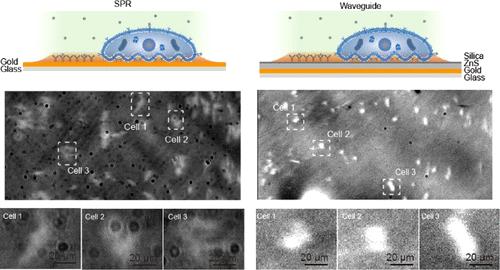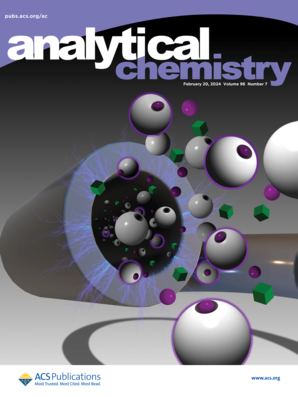Surface-Sensitive Waveguide Imaging for In Situ Analysis of Membrane Protein Binding Kinetics
IF 6.7
1区 化学
Q1 CHEMISTRY, ANALYTICAL
引用次数: 0
Abstract
Ligand binding to membrane proteins initiates numerous therapeutic processes. Surface plasmon resonance (SPR), a popular method for analyzing molecular interactions, has emerged as a promising tool for in situ determination of membrane protein binding kinetics owing to its label-free detection, high surface sensitivity, and resistance to intracellular interference. However, the excitation of SPR relies on noble metal films, typically gold, which are biologically incompatible and can cause fluorescence quenching. Here we present a surface-sensitive waveguide imaging technique that retains the advantages of SPR and can be easily integrated into standard SPR devices by depositing additional dielectric layers onto SPR sensor chips using conventional vacuum evaporation. This novel sensor provides a silica surface, a well-known biologically compatible surface, for cell attachment and produces a sharper resonance curve and a stronger surface electric field than SPR, leading to improved measurement precision. After incorporating amplitude modulation, this approach increases measurement precision by approximately eight times compared to traditional SPR with the same optical setup. This high-precision method enables in situ single-cell analysis, revealing cell-to-cell heterogeneity that provides fuel for drug resistance. We believe this technique provides a streamlined strategy to enhance SPR for expanding their applications in biochemical research and drug screening.

求助全文
约1分钟内获得全文
求助全文
来源期刊

Analytical Chemistry
化学-分析化学
CiteScore
12.10
自引率
12.20%
发文量
1949
审稿时长
1.4 months
期刊介绍:
Analytical Chemistry, a peer-reviewed research journal, focuses on disseminating new and original knowledge across all branches of analytical chemistry. Fundamental articles may explore general principles of chemical measurement science and need not directly address existing or potential analytical methodology. They can be entirely theoretical or report experimental results. Contributions may cover various phases of analytical operations, including sampling, bioanalysis, electrochemistry, mass spectrometry, microscale and nanoscale systems, environmental analysis, separations, spectroscopy, chemical reactions and selectivity, instrumentation, imaging, surface analysis, and data processing. Papers discussing known analytical methods should present a significant, original application of the method, a notable improvement, or results on an important analyte.
 求助内容:
求助内容: 应助结果提醒方式:
应助结果提醒方式:


